► “Metis in Ancient Greece”:
“Collaboration with José Cervera”💫:

Statue of the Greek philosopher Plato (c. 428 B.C.-348 B.C.). Behind him, the Goddess of Wisdom, Athena. Modern Academy of Athens.
______________________________________________________________
►Summary:
This article is divided into three sections.
The First section presents Metis as a character, a Titan Goddess.
Being swallowed by Zeus (his cousin and husband), Metis would succumb to the same fate that Cronus´children, as indicated in the Second section.
The Third section will categorize different types of Knowledge, in Ancient Greece; Metis, among them. In that same section, the post will highlight how the word Metis acquired different meaning, changing from the name of the Goddess (Metis, the Oceanid Titaness & Zeus´cousin and wife) to refer to a type of Intelligence (Practical wisdom). Thus, Metis was considered to cover all cognitive processes that were necessary for man in order to face adverse or confrontational situations against powerful adversaries, often in unstable and complex environments. Three examples from Greek Mythology will be provided. Finally, some final thoughts in the conclusion.
•~~~•~~~ •~~~•~~~•~~~•~~~•
I. ►Metis, The Titan Goddess:
Metis was a mythological character belonging to the Titan generation. Like several primordial figures, she was an Oceanid. She was born of Oceanus and his sister Tethys, of an earlier age than Zeus and his siblings.
Metis was the first spouse of Zeus, and also her cousin.
Zeus lay with Metis but immediately feared the consequences. It had been prophesied that Metis would bear extremely powerful children: the first, Athena and the second, a son more powerful than Zeus himself, who would eventually overthrow Zeus.
In order to forestall these dire consequences, Zeus tricked her into turning herself into a fly and promptly swallowed her. He was too late: Metis had already conceived a child.
As Zeus had swallowed Metis, Athena leaped from Zeus’s head. She was fully grown, armed, and armoured.
•~~~•~~~ •~~~•~~~•~~~•~~~•
II. ►A (side) note on Zeus and Cronus´Cannibal behaviours:
The similarities between Zeus swallowing Metis; and Cronus, swallowing his children, have been noted by several scholars.
Cronus was the Titan god of time and the ages. He envied the power of his father, the ruler of the universe, Uranus.
Cronus attacked him with the sickle, castrating him and casting his testicles into the sea.
From the blood that spilled out from Uranus and fell upon the earth, the Gigantes, and the Erinyes were produced. The testicles produced a white foam from which the goddess Aphrodite emerged.
Once Cronus had castrated Uranus, he and his wife Rhea took the throne. Under their power a time of harmony and prosperity began, which became known as the “Golden Age”; a time when it was said that people lived without greed or violence, and without toil or the need for laws. But not all was well for Cronus, as he had learned from Gaia and Uranus that he was destined to be overcome by his own sons, just as he had overthrown his father. As a result, although he sired the gods Demeter, Hestia, Hera, Hades and Poseidon by Rhea, he devoured them all as soon as they were born to prevent the prophecy.
When the sixth child, Zeus, was born Rhea sought Gaia to devise a plan to save them and to eventually get retribution on Cronus for his acts against his father and children.
Rhea secretly gave birth to Zeus in Crete, and handed Cronus a stone wrapped in clothes, which he promptly swallowed, thinking that it was his son.
Once he had grown up, Zeus used an emetic given to him by Gaia to force Cronus to disgorge the contents of his stomach in reverse order: first the stone, which was set under the glens of Mount Parnassus, and then his two brothers and three sisters.
This would lead the Olympians in a ten-year war against the Titans, before driving them defeated into the pit of Tartaros. Many years later, Zeus released Kronos and his brothers from this prison, and made the old Titan king of the Elysian Islands, in the Underworld.
As to Zeus´s story, relevant to us here, José Cervera accurately notes that the Ruler of Gods might have swallowed Metis (also) because he was to a certain extent aware of the fact that he was lacking something. Meaning: The Practical Wisdom that Metis represented. By swallowing Metis, however, Zeus had gained wisdom as part of his intrinsic nature. This would be a case of Incorporation which reminds us (despite the differences) to the biblical account, according to which Eve was molded by God from Adam´s rib.
•~~~•~~~ •~~~•~~~•~~~•~~~•
III. A ►Different Types of Knowledge: Episteme, Techne, Metis and Phronesis:
For the Greeks and particularly for Plato, Episteme and Techne represented knowledge of an order completely different from Metis.
Episteme means “science”, “understanding” or “knowledge”, with the implication that the understanding was rationally founded, in contrast to mere opinion or hearsay. Noesis, or dialectic reason, is the method used by Episteme.
Techne entails “technical skills”. It could be expressed precisely and comprehensively in the form of hard-and-fast rules, principles, and propositions. Techne is based on logical deduction from self-evident first principles.
Nous is the closest word to “intelligence” but it is more correctly translated as “mind”, and “mental activity”. For Plato and Aristotle it is the part of the soul which perceives abstract truths.
Phronesis means “practical wisdom”, “good judgement” or what we might call “common sense”.
Metis, in what concerns us is another form of practical wisdom, what we would call “cunning”. It is similar to Phronesis in that it entails knowledge of how humans behave, but it is manipulative and deceitful rather than seeking the common good. Cunning intelligence would later be defined as Phronesis.
III. B ►Metis, Magical Cunning and Practical Wisdom. Examples of Metis in “The Odyssey”:
By the era of Greek philosophy in the 5th century BC, Metis had become the mother of wisdom and deep thought, but her name originally connoted “magical cunning”.
Metis represented a wide array of practical skills and acquired intelligence in responding to a constantly changing natural and human environment.
Hence the word Metis began to be used to denote a particular form of practical wisdom,
The classic case of Metis is Odysseus, as he often used his cleverness to deceive and defeat his enemies. This is found many times in Homer´s epic poem.
•1. One example of Metis as magical cunning appears in Book XII. We are referring to the episode in which Odysseus plugged his crew’s ears with earwax, while binding himself and his crew to the mast of the ship to avoid the Siren´s song.
•2. When it comes to Metis (magical cunning), the episode of Polyphemus, from Homer´s “Odyssey” (Book IX) is also worth mentioning.
The Cyclops Polyphemus is portrayed as a cruel monster who had devoured a few of Odysseus’ men. The hero wanted to beat him and take revenge so he offered Polyphemus some wine. The cyclops easily got drunk, but before falling asleep, he asked Odysseus his name, Odysseus told him his name was “Οὖτις”, which means “nobody”. While the monster was sleeping, Odysseus used a stake to blind him. When Polyphemus shouted for help from his fellow giants, saying that “Nobody” had hurt him, they just ignored him as they just took his words literally (“Nobody had hurt him”). In the morning, the blind Cyclops let the sheep out to graze. But Odysseus and his men had tied themselves to the undersides of the animals and that was how they managed to finally get away.
•3. Finally, the Trojan Horse. Wasn´t it a great example of Metis or Cunning, as well?. Using trickery rather than violence, Odysseus disguised warriors as a gift, men as (a wooden image of) an animal, a symbol of the Greeks’ future victory as an image of their defeat, and ultimately, a clever trap. Once inside the city walls, the transformation was reversed and the act of Metis revealed for what it was.

“Building of the Trojan Horse” by Giandomenico Tiepolo (1774).-
In these examples of Metis, taken from “The Odyssey”, the emphasis is both on Odysseus’s ability to adapt successfully to a constantly shifting and challenging situation and on his capacity to understand, and hence outwit, his human and divine adversaries.
It is not a minor detail, either, that Odysseus is traditionally aided by Athena, the Goddess of Wisdom.
Athena- as mentioned before- was born from Zeus’ head, after the latter had swallowed her mother, the goddess Metis, because, as it had been predicted to him that his children by her would overthrow him.
•~~~•~~~ •~~~•~~~•~~~•~~~•
►Conclusion:
Metis, understood as a type of practical wisdom, is commonly found in Greek Myths and Literature. In all its facets and faces of the same phenomenon lies a peculiar kind of behavior. More specifically: the extreme attention, observation, flexibility and creativity to sort out things, under certain “special” circumstances.
However, despite its relevance, Metis as type of Intelligent ability has been also relegated, criticized and even despised.
Plato intentionally ignored it, keeping it aside in his Gnoseological Theory. In turn, he enthroned the discursive Episteme, clearly much more acceptable to him, as he considered that Episteme was related to the highest degree of Knowledge.
Plato´s ideal of knowledge was sternly rational and hence: Apollonian. He made sure to suppress any “intuitive” shade that might somehow darken the diaphanous light of Reason and Episteme. Indeed, as pointed out before, Plato despised practical knowledge basically because it did not depend on Dialectical Reason (Noesis) and it seemed to be linked to the body and senses, therefore to the so-called “Dionysiac” forms.
Suffice it to recall that for Nietzsche, the Apollonian-Dionysian Dichotomy, (“The Birth of Tragedy”. 1872) represented the opposition between structured, geometric forces; and fluctuating, creative, irregular forms; respectively. Nietzsche contrasted the cerebral Apollo with his half-brother, the hedonistic Dionysus. Apollo, as the sun-god, represents light, clarity, and form, whereas Dionysus, as the wine-god, represents drunkenness and ecstasy.
However, back to Plato, it is worth noting that certain Dionysiac forces still seem to be present in his dialogues. Most times in the forms of myths or allegories.
We could conclude that Episteme and Metis are different types of intelligences.Episteme is rigid, dialectic and Apollonian, while Metis might be quite unpredictable in its reasonings and linked to Dionysus. But despite this, they complement each other. We´d rather say the ideal entails not a dichotomy but, instead, a conjunction of abilities.


Apollo (on The Left) & Dionysus (on The Right), representing the duality of Arts… And Intelligence. Apollo=Episteme. Dionysus=Metis.-

♠About José Cerbera:
José is a Spanish philosopher and blogger. In his own words: “I am a restless and curious being who believes in the religion of books and their healing power. But without forgetting that the mystery of existence isn´t contained in any book. I have studied Philosophy and that led me to distrust everything. Later on, I believed in me. Soon after, in the World Itself and what goes beyond it because it just boundless”. Please check out José´s blog: “El Ritual de las Palabras”. Thank you, José! ⭐️💫.
•~~~•~~~ •~~~•~~~•~~~•~~•~~•~
_____________________________________________








 Cerberus watched the
Cerberus watched the 
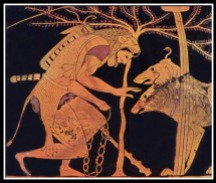
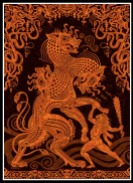







 One of the most moving stories involving dogs in the one concerning Argos, the loyal friend of King
One of the most moving stories involving dogs in the one concerning Argos, the loyal friend of King 








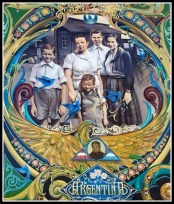







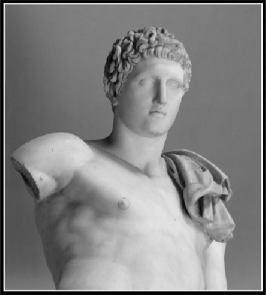
























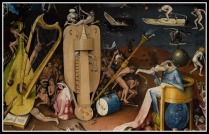





 The three stages of the same plan are revealed through two texts: The Anglo-American Cyclopaedia entails the discovery of Uqbar. The First Encyclopaedia of Tlön, leads to know about the fantastic planet called Tlön, while the letter addressed to Herbert Ashe, explains plans and contingencies of the society Orbis Tertius. These three texts are either copies, or give birth of them.
The three stages of the same plan are revealed through two texts: The Anglo-American Cyclopaedia entails the discovery of Uqbar. The First Encyclopaedia of Tlön, leads to know about the fantastic planet called Tlön, while the letter addressed to Herbert Ashe, explains plans and contingencies of the society Orbis Tertius. These three texts are either copies, or give birth of them.
 Disorted Copies and Mirrors
Disorted Copies and Mirrors 












 The committee on the TV-show “Hot Shot” consist of three judges named “Wraith”, “Hope”, and “Charity”. The theological virtues of Christianity are “Faith”, “Hope” and “Charity”. These were traditionally the path to follow in order to attain salvation. The change from “Faith” to “Wraith” is justified because our faith is now on the virtual world. The new salvation is to be successful, to obtain a more real virtuality.
The committee on the TV-show “Hot Shot” consist of three judges named “Wraith”, “Hope”, and “Charity”. The theological virtues of Christianity are “Faith”, “Hope” and “Charity”. These were traditionally the path to follow in order to attain salvation. The change from “Faith” to “Wraith” is justified because our faith is now on the virtual world. The new salvation is to be successful, to obtain a more real virtuality.










